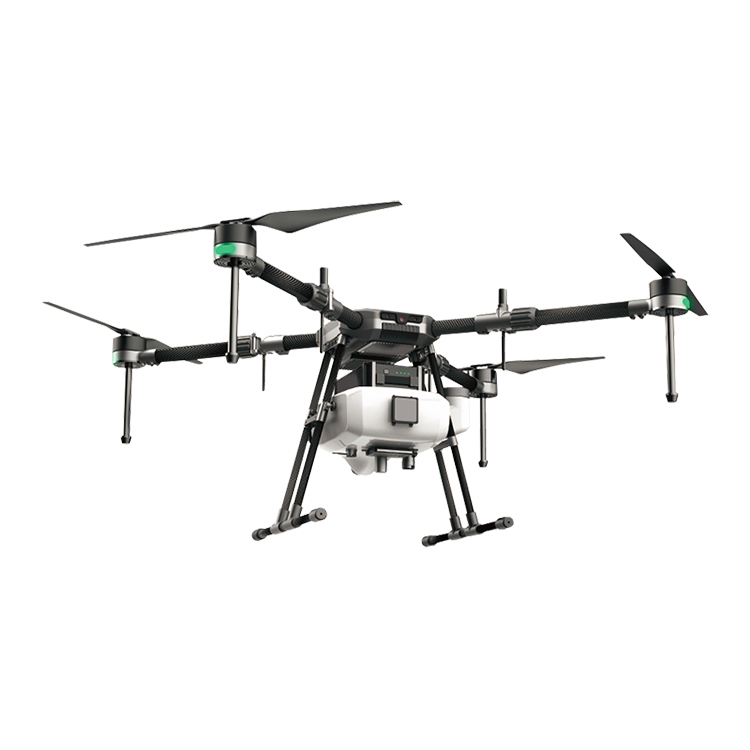The Maharashtra state government has been looking to work together with drone companies. A workshop was held in November 2018, where the process of drone mapping was studied for irrigation and agricultural use.
Recently, the state government signed a partnership with the World Economic Forum (WEF) Centre for the Fourth Industrial Revolution exploring the use of drones for various governmental services. Timothy Reuter, the WEF Portfolio Head for Drones and Tomorrow’s Airspace, said that with farmers suffering from drought, drone mapping can be used to improve irrigation systems and agricultural yields.

According to Dr. Ruchi Saxena, Director of India Flying Labs, part of WeRobotics, in the tribal villages of the Dahanu-Palghar belt in Maharashtra farmers are being educated in applying advanced and sustainable technologies to their farmlands.
Villagers have learnt about crop rotation, aquaponics and hydroponics, fish farming, bio-waste management, organic farming and bio-based crop protection using drones. Apart from this, these farmers are using drone-based technologies on their farms and orchards.
The high-resolution multi-spectral images from drones, coupled with artificial intelligence and machine-learning, help to gain insight into plant health, soil conditions and can help to predict crop yield, Dr. Saxena added.
Explaining further how the drone technology will bring changes to farmers, Dr. Saxena said that each individual plant can be located separately and analysed by using precision agriculture that can help in identifying stressed plants. That way, farmers can take action early and prevent diseases spreading to other crops.
The data collected by drones is combined with satellite-based remote sensing data. Soil-based sensor data can provide actionable insights to take timely action to prevent losses from crop disease, optimise irrigation and reduce the impact of climate change and unpredictable seasonal variations.
Drones can help farmers calculate exact land sizes, classify types of crops, perform soil mapping along with pest management and also plan their harvesting. In India, there are over 35 drone start-ups that are working to raise the technological standards and reduce the prices of agriculture drones.
However, the cost of uav on farming is a challenge. It is extremely expensive to hire an urban drone team to conduct a survey for a small field in a remote location. According to Dr Saxena small farmers should be equipped with the right skills in order for them to become entrepreneurs, so that they can form a group and own the drones. At this moment, small and medium-scale farmers are hesitant to use drones because of the costs involved, an official from Mumbai-based drone startup Pigeon Innovative said.
Prices for agricultural drones, which can be used by farmers for soil analysis, surveying farms, planting, spraying and irrigation purposes, start at around USD $ 2,000 and can amount to USD $ 15,000 a piece. And even when a farmer is able to buy a drone, the costs of maintaining it are too high. Batteries for instance are expensive.
Apart from technical know-how and affordability, the lack of trained pilots is a major restraining factor in the growth of the UAV market in India.
In December 2018, the Indian government launched a drone policy, which allows for uav use on farming, next to for instance their deployment in infrastructural works.
Intelligent Agriculture is the trend of all over the world. And the intelligent drone act as a important role in this world plan.
Agriculture spraying drone can replace the traditional pesticide sprayer and it's speed is 40times of the traditional sprayer. It will save 90% water and 30%-40% pesticide. Small droplet diameter make the pesticide more well-distribute and improve the effect. At the same time, it will make the people faraway from the pesticide and reduce the pesticide remain of the crop.

Contact: Fly Dragon Drone Tech.
Email: frank at dronefromchina.com
Add: NO. 9 Dayu Road PiDu distric, ChengDu 611730, China